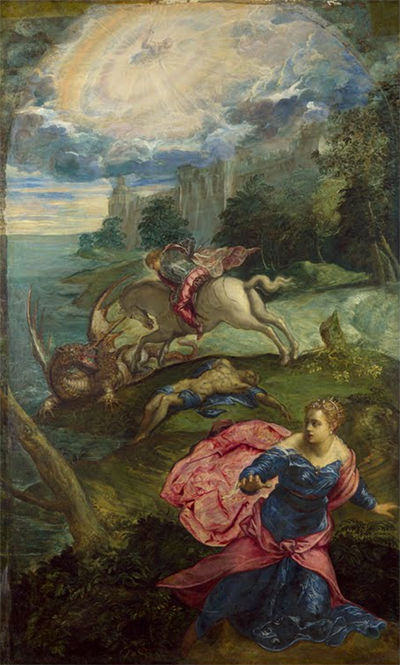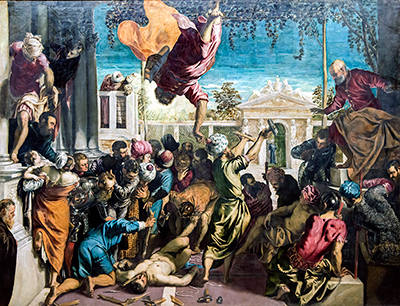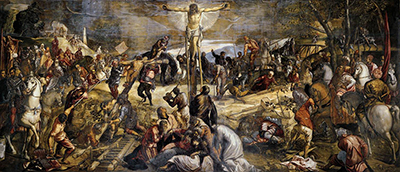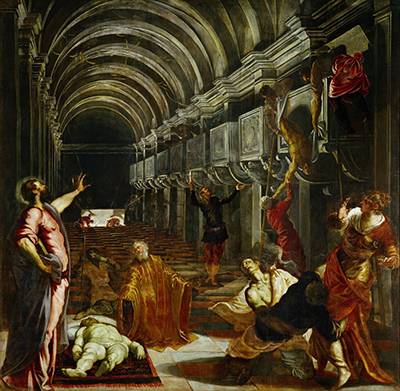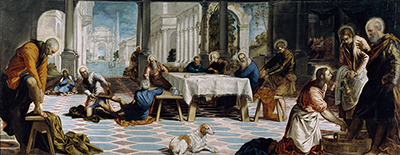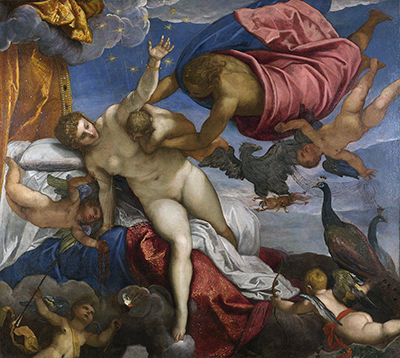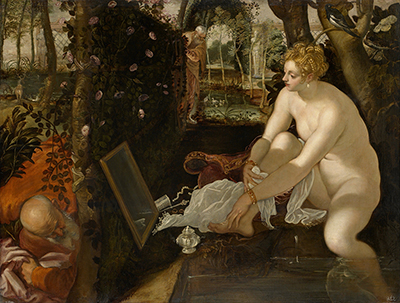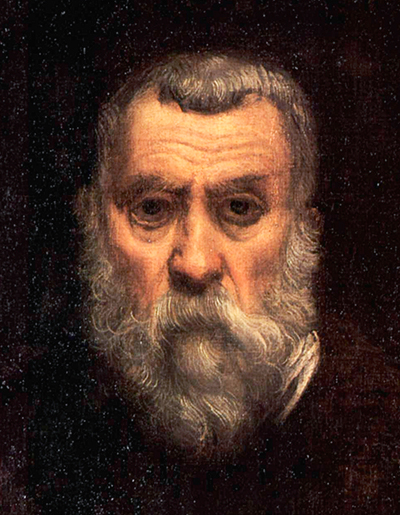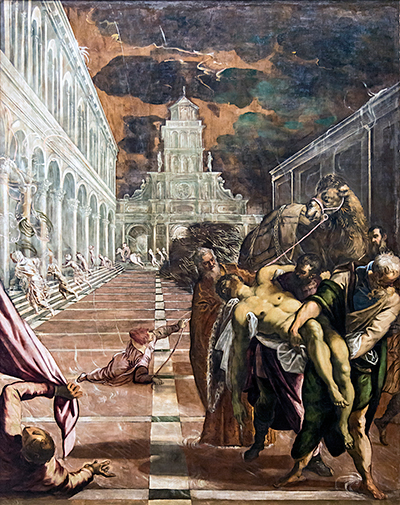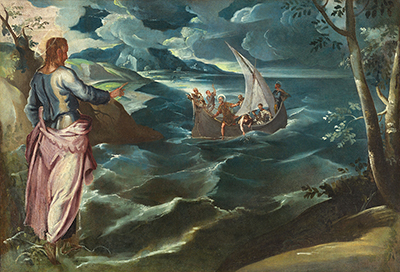Jacopo Tintoretto was a unique artist, exceptionally aggressive, both in his figurative style plus also in the speed that he completed one painting after another.
Il Furioso, as he became known in honour of his brisk work, was forced to forge his own path after being rejected by Titian. The great master, who he greatily admired, was concerned that his style was so pronounced that it would be impossible to teach him the ways of the Venetian school. His style is classes within said school, but all of his career was spent on the outskirts of this group, making up for his lack of opportunity with hard work and passion.
At times it was almost as if this early rejection by someone that he so respected had provided a spur to prove him wrong. There can be no doubt that Tintoretto would create a fine collection of paintings and drawings across his career and perhaps deserved more respect from his Venetian competitors than he received. The artist would lock himself away in his small studio, only allowing his assistants to enter and peruse his working techniques. He held a very small studio in terms of personnel and most were family members, whom he felt he could trust.
With such a small studio and a fairly introverted character, the legacy left by Tintoretto was substantially restricted but a famous artist who clearly took influence from his work was Greek artist, El Greco. A brief browse of El Greco paintings will immediately reveal comparisons between their styles, both in active figures with bright colour and a Mannerist approach to architectural form. Tintoretto's secretive nature did not lend well to influencing future generations but clearly El Greco was thorough enough in studying art history in order to uncover the Italian's contributions.
When studying the Venetian school it is particularly enlightening to compare his work with Giorgione paintings, for example, or even perhaps Giovanni Bellini paintings. To see the difference between artists who followed the clear path of master to pupil over several generations against someone who was denied access to that but responded with a stubborn drive is visually very intriguing. At this period within art history it was rare for an artist to be successful without following the designated path of joining a master's studio and so he would have to have had a very strong character to reach the heights that he did.
Whilst refusing to conform to the standard Venetian style, he was undoubtably part of that school because of his obsession with the city itself. Besides producing portraits of many of the great names of this region, he would also be highly involved in the arts scene beyond just painting itself. Tintoretto was a skilled sculptor and also got involved in theatre production design and regularly attended cultural events within the city. He was proud of his home and used it to inspire his artistic work.
Many of his paintings were installed in local churches and council buildings after agreeing to take on the work for nominal payments. He knew that to compete effectively within this city he would need to take on work for competitive prices and also find other ways to effectively earn work. A sign that his reputation is not held in the same esteem as the likes of Raphael, Michelangelo and Leonardo da Vinci is that many of these installed artworks remain in their original location, which may not be ideal for their long term preservation. There are suggestions that Tintoretto studied with any of Bonifacio Veronese, Paris Bordone or Andrea Schiavone but it is generally accepted that he was most certainly influenced by Piero della Francesca and Giovanni Bellini.



